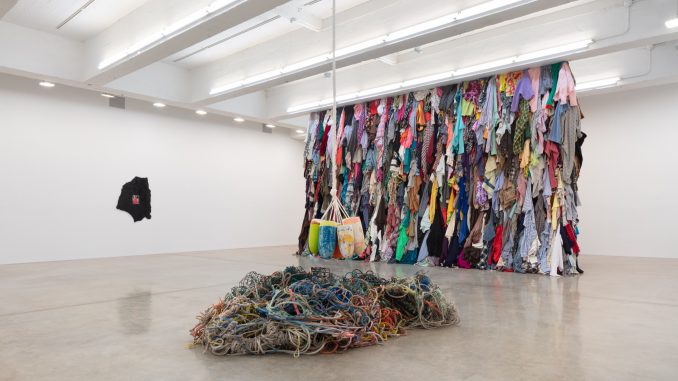
After studying psychology at Dartmouth College, Karyn Olivier didn’t realize art was her true passion until she took a ceramics night class while working as a store manager at Urban Outfitters.
”I had a teacher who told me she thought I had a talent,” said Olivier, now an art professor at Temple University.
Olivier hosted, “At the Intersection of Two Faults”, a solo exhibition that was on display from June 25 through July 30 at the Tanya Bonakdar Gallery in New York City. The exhibition is her debut show at the gallery and addresses metaphorical and visual representations of absence through inspirations from her birthplace in Trinidad, according to Olivier.
As a multidisciplinary artist, Olivier uses a variety of materials to create different pieces like sculptures and installations to evoke different emotions. Throughout the exhibition, her pieces confront themes of invisibility and displacement, said Megan Bedford, the gallery director at Tanya Bonakdar Gallery.
“When you come in it’s really powerful and overwhelming,” said Bedford. “When you walk around and you start seeing some of the other works you become more integrated into her practice by seeing these other elements. A lot of her work feels like memorials and monuments,” Bedford said.
Olivier first became interested in creating installation pieces, which are large-scale works of art that include a combination of materials and techniques, while attending Cranbrook Academy of Art, where she received her Master’s of Fine Arts. There she discovered artists like Ann Hamilton, James Turrell and Robert Irwin and appreciated their immersive pieces, she said.
“I loved the idea of an installation,” Olivier said. “I was thinking about what it means to create an artwork that engages all of your senses.”
Oliver’s exhibition also features heavy usage of gaps, fissures and cracks. She has always felt fascinated by the idea of faults, both geologically and metaphorically, because she was born in Trinidad and Tobago, where the world’s largest natural asphalt lake is located, she said.
“It’s a gap, it’s a moment, it’s a site, it’s a time,” Olivier said. “It’s a site for a possibility that something can open up and be revealed, and be unearthed. I think about metaphorically what that means, two things that shouldn’t be coming together but when they intersect magic could happen.”
Olivier was further inspired by the idea of faults during her time this year with Recycled Artists in Residency, a Philadelphia non-profit that provides studio space and more than 450 tons of materials per day for artists to work with, according to their website. One day she came across a truck full of asphalt and decided to take pieces of it back to her studio, she said.
“You could see the cracks and the fissures in them,” Olivier said. “They reminded me geologically of the fractures, but they also looked like maps and roads. Then I started thinking about them in that way, as these maps or these windows to see another way.”
“At the Intersection of Two Faults” is not the traditional gallery experience and instead features sculptures and installations like “Fortified,” a wall made of clothes that is 20-feet wide and 12-feet high.
Alissa Roach, who attended the opening night of Oliver’s exhibit, found the same sense of inspiration from her teaching as Olivier’s encouragement to explore and experiment has most helped Roach grow as an artist, she said.
“Karen is the professor that will open your eyes to a lot more than you think you know about art,” said Roach, a senior sculpture major who has taken two classes taught by Oliver. “I don’t think I knew what art was until I took Karen’s class,”
Olivier hopes her work will inspire everyone, not just her students, to see the world through a different perspective, she said.
“I want people to feel,” Olivier said. “I hope that the specificity of the work and the material and the known nature of them can allow people to recognize and then explore the what if or to see in a new way, or imagine something they hadn’t considered, and then use that for themselves.”



Be the first to comment